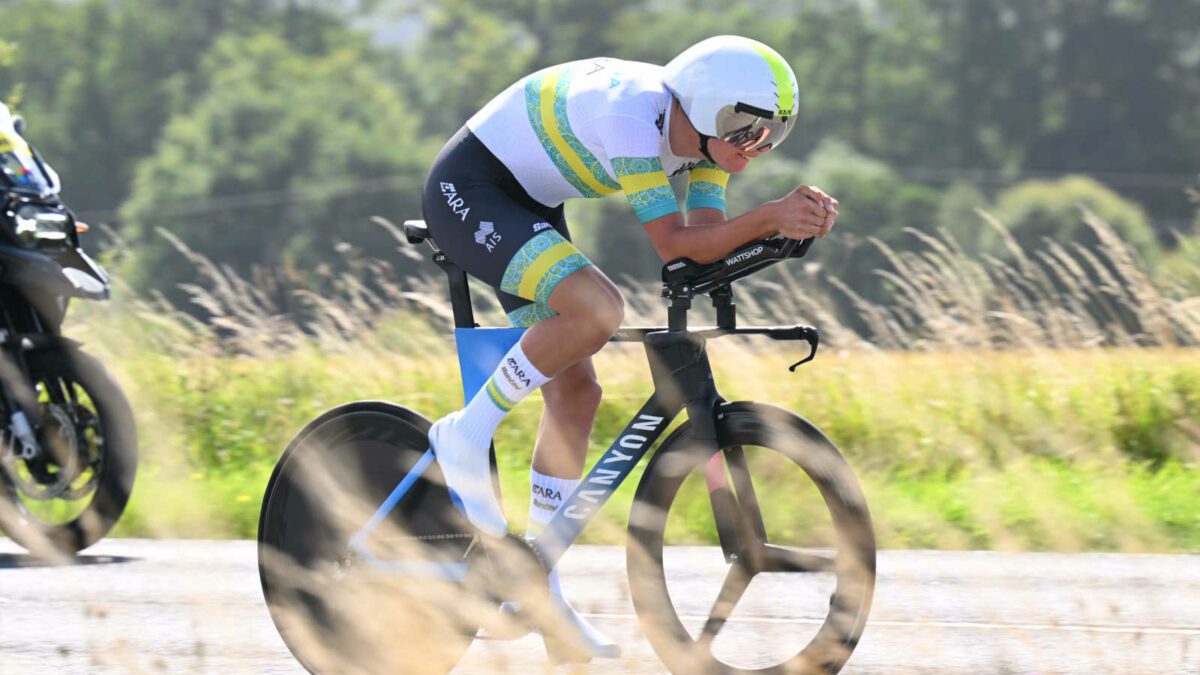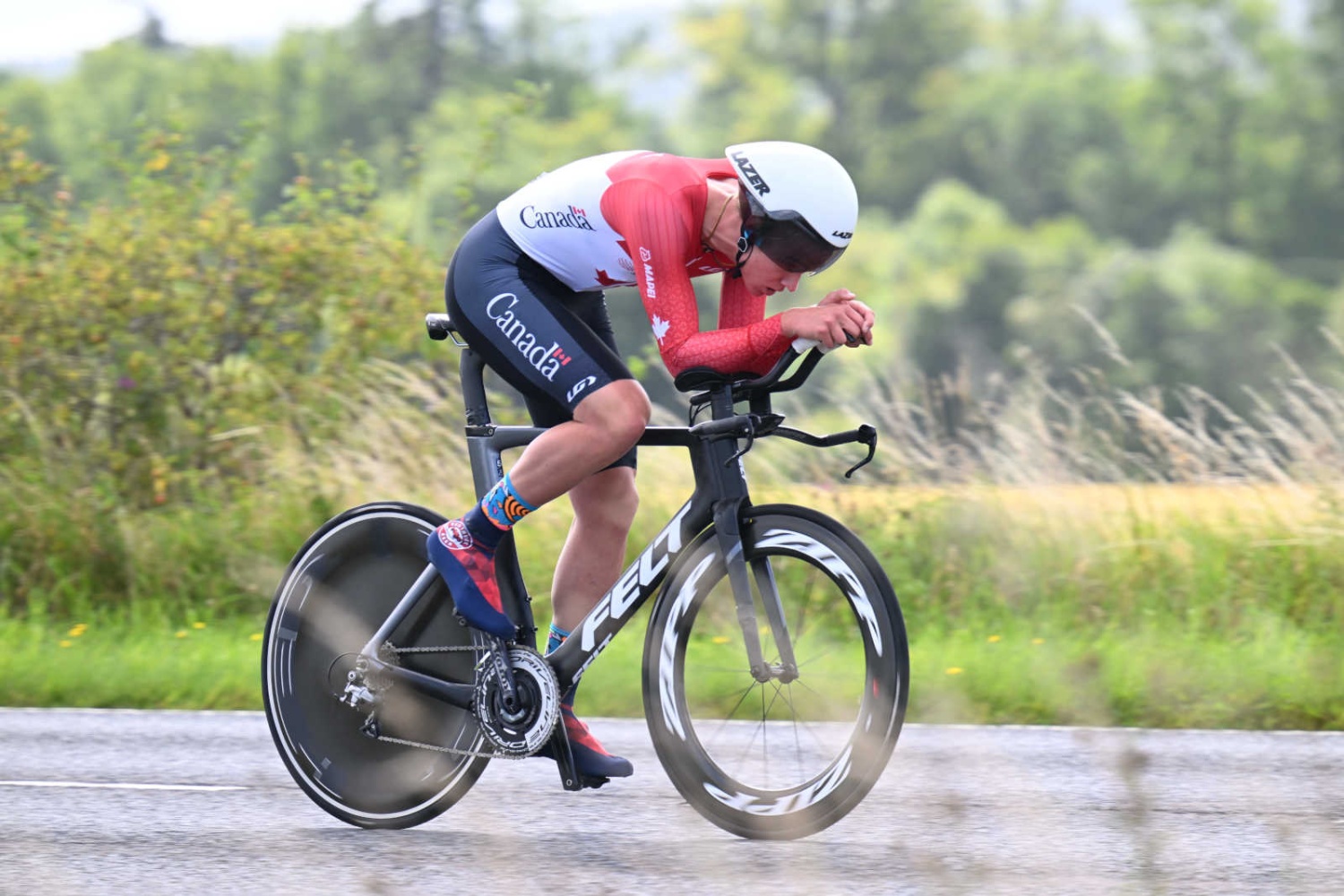By Michael Barry
A well-engineered and properly fit time trial bicycle can make the difference between a rider finishing first in a race or twentieth. Aerodynamics and other technical aspects of bicycles significantly influence the outcome of any race, but when the rider is alone in the wind, the margins are significant. With a bad position or slow bicycle, the strongest rider won’t be a contender in a time trial.
At the professional level, where teams are sponsored by bike brands and have financial resources to allocate to testing and analysis, this is part of the game, yet at the junior level (under 19 years old) where riders are on teams with limited budgets, or are self funded, the expense and effect narrows the funnel of riders coming into an already expensive sport. Teenagers, and their parents, shouldn’t need to be concerned with purchasing a $15,000 time trial bike, on which they may race only a handful of times in a season, to be competitive. The pursuit of speed through aerodynamics can be a financial arms race.
The financial realities for parents
Cycling is no longer an inexpensive working class sport. Financial cost on every level limits participation. At the youth level, this needs to be addressed especially as kids grow, forcing parents to buy multiple bikes each season.
With the advent of the power meter and increased understanding of how to test the performance of a bicycle and rider, engineers, and even curious cyclists, can figure out where to save energy to go faster. We now have a greater understanding of just how much the technical aspects affect the results of a race. The margins are so great that in the professional peloton, teams with less aerodynamic equipment know they won’t be in the top ten before the race even starts. The teams who allocate their resources to performance analysis are on top, while those with small budgets, sponsor limitations, or simply a lack of understanding of the significance of aerodynamics, are left to follow and, ultimately, to copy those who lead.
The tech arms race of cycling should not involve juniors
Professional teams are now heavily recruiting riders from the junior ranks. Younger riders are performing in the toughest professional races and as a result, teams work to discover the standout talent before they are snapped up by another team. Ten years ago, scouts hunted through the under-23 category whereas now, their focus has shifted to younger riders. Although riders are selected on their physical attributes as well as their results, it is primarily their performances in races that attract the teams’ attention, which of course a fast time trial bike will influence.
The effects on results
For example, in 2023, at the junior world championship time trial, Matthew Ney, a Canadian rider finished 12th. He was 30 seconds out of the top five, a gap which could have likely been bridged with better equipment and the resources to perfect his position. A top five result, or even a top ten, might have attracted the attention of teams, instead he quit the sport before agreeing to ride for a lower budget Canadian development team. If the riders had all been on standard road bikes, the result would have likely been different which ultimately could change the direction of a teenager’s life.
Canada’s Matthew Ney at the world time trial championships, Photo: Sirotti
The aerodynamic edge
At the national level, where national teams for world championships, games, or projects are often selected on the results in timed events, finances influence selection. A rider who can’t afford the aerodynamic gear, will be unable to compete against a rider who’s made a significant investment. On the start line of a national event, the differences in gear are often stark. Clouded by technology, it’s difficult for the selection committees to know where true potential lies. Few understand, or pay attention to the differences, we only see the result. We don’t quantify the advantage of a skinsuit, shoe covers or a helmet when we compare one rider’s performance to the other. But we should. They should all ride their road bikes.
Levelling the playing field
Of course, road bikes are also designed to be more versatile, easier to handle in various adverse conditions and easier to stop. This would limit the number of serious injuries.
To level the playing field by limiting expenses, many North American junior stage races have now banned time trial bikes. No longer do teams, or individuals, have to worry about buying or traveling, with two bikes. The riders use one bike for all events, making the racing more egalitarian.
Taking the lead from the organizers, it should be the goal of the sport’s governing bodies to grow the pool of riders entering the sport, by not only making the sport equitable but also decreasing the barriers of entry.
(this article first ran on cyclingmagazine.ca).


It’s not just the bikes that should be examined but also the position. As riders try to eke out further and further aero gains safety, in my opinion, is being compromised. Riders routinely have their heads down not looking ahead with disastrous results. Fast is not safe if you run into the back of a bus.
Well, Duh! I’ve said this for years. On top of that it would do to just put a limit on the retail price of a bike that a junior can ride.
I’m sure that there are parents ponying up for 15,000 dollar road bikes and all the assorted gear plus travel and camps.
There’s not going to be many “Belgian farmer’s son’s ” in that group.
[Cycling is no longer an inexpensive working class sport. Financial cost on every level limits participation. At the youth level, this needs to be addressed especially as kids grow, forcing parents to buy multiple bikes each season.]
And it’s back to the Soccer vs Hockey divide again, not just in potential injuries, but in the ‘cost of competing’.
And ultimately, the ‘sport’ gets lost in the cost.